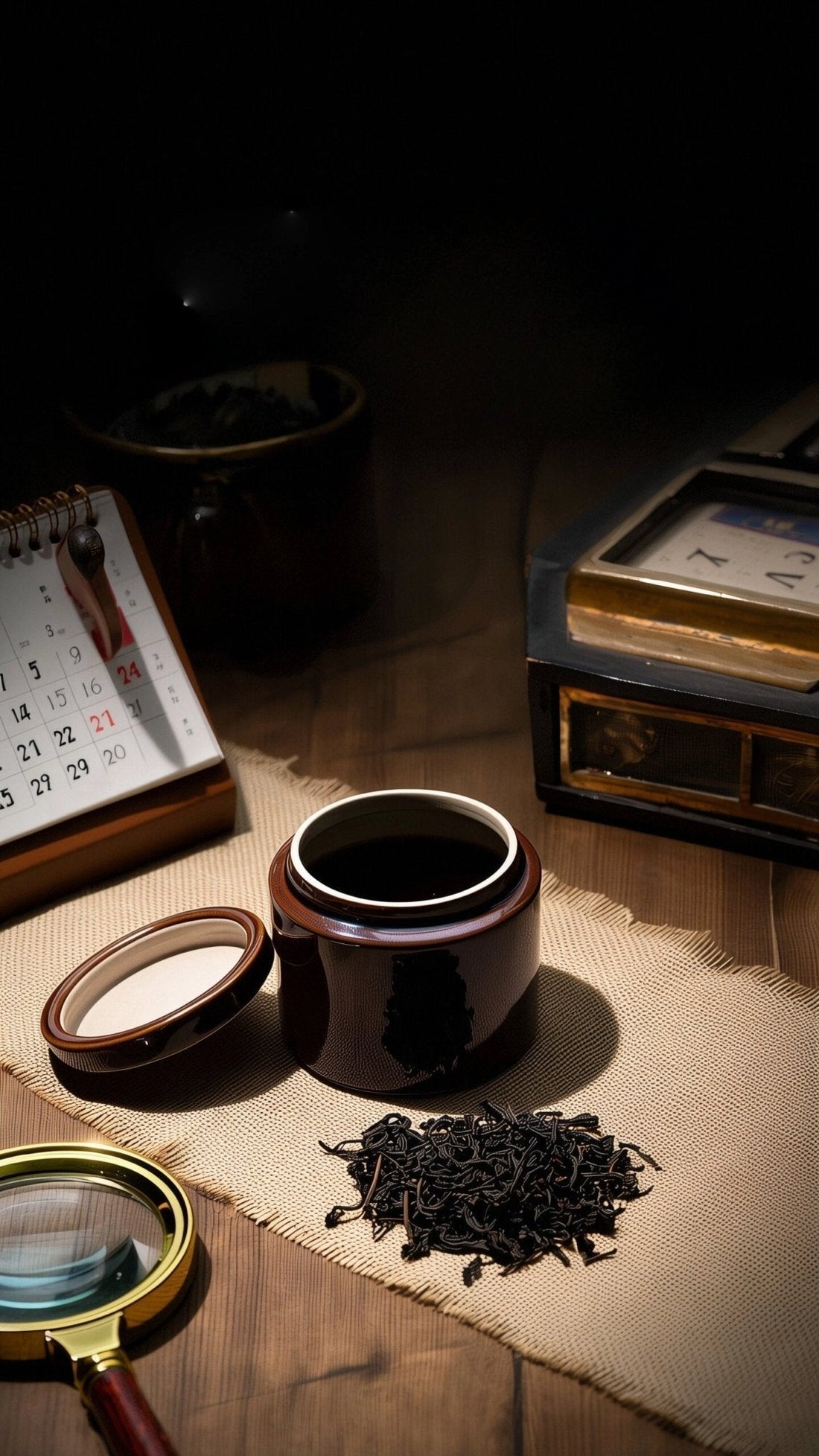
How Long Can Tea Last? A Complete Guide to Tea Storage & Freshness
Abstract
This guide breaks down the shelf life of different teas—from green tea’s need for freshness to dark tea’s long-term aging potential—and shares key storage rules: all teas require cool, dry, and dark conditions. Learn how to extend freshness, spot spoilage, and maximize flavor for every variety.
Key Takeaways:
1. Green tea lasts 6-12 months unopened (3-6 months opened) and requires refrigeration to preserve freshness.
2. White tea, despite light fermentation, can be aged long-term (5-10+ years) with mellow flavor development; no refrigeration needed.
3. Lightly fermented oolong (e.g., Anxi Tieguanyin) should be consumed within 1 year, while heavily roasted/fermented oolong (e.g., Wuyi Rock Tea) lasts 2-3 years unopened and can age well.
4. Black tea retains optimal sweetness for 1-2 years unopened; prolonged storage dulls its flavor.
5. Dark tea (e.g., Pu-erh) has no fixed expiration and improves with aging (5-20+ years) under proper conditions.
6. Universal storage rules for all teas: Store in cool, dry, and avoid direct sunlight to preserve quality.
1. Tea Shelf Life by Type: Detailed Breakdown
Green Tea: Prioritize Freshness
7. Shelf life: 6-12 months unopened; 3-6 months once opened.
8. Why: Unfermented green tea contains fragile catechins and volatile aromatics that degrade quickly when exposed to air, light, or heat. Stale green tea loses its bright, grassy notes and becomes bitter or flat.
9. Aging note: No aging value. Freshness is critical—older green tea lacks its signature vibrancy.
White Tea: Unique Aging Potential
10. Shelf life (for fresh consumption): 1-2 years unopened; 6-12 months opened.
11. Aging potential: Can be aged for 5-10+ years, with improved flavor.
12. Why: Lightly fermented but rich in polyphenols and amino acids that evolve over time. Aged white tea (e.g., old Shoumei) develops a smooth, mellow profile with honey or woody undertones, losing the sharpness of fresh batches.
13. Aging note: Unlike most light-fermented teas, white tea benefits from slow oxidation during storage, making it suitable for long-term aging (similar to dark tea).
Oolong Tea: Depends on Fermentation & Roasting
14. Lightly fermented oolong (e.g., Anxi Tieguanyin, Qingxiang style):
1. Shelf life: 6-12 months unopened; 3-6 months opened.
2. Why: High in delicate floral/fruity aromas (e.g., jasmine, peach) that are unstable. These volatile compounds fade quickly, leaving a dull taste.
3. Aging note: Not recommended for aging—best enjoyed within 1 year to maximize aroma.
15. Heavily fermented/roasted oolong (e.g., Wuyi Rock Tea, Zhuyan; Phoenix Dancong with full roasting):
1. Shelf life: 2-3 years unopened; 1-2 years opened.
2. Why: Roasting reduces moisture and stabilizes compounds, while higher fermentation (50-70%) slows degradation. Aged versions develop richer, earthy notes (e.g., caramel, chocolate).
3. Aging note: Can be aged for 3-5 years with proper storage, enhancing complexity.
Black Tea: Limited Longevity for Sweetness
16. Shelf life: 1-2 years unopened; 6-12 months opened.
17. Why: Fully fermented, but its appeal lies in bright sweetness (e.g., honey, malt) and fruity aromas (e.g., blackberry). These fade over time, leaving a flat, woody taste with reduced sweetness.
18. Aging note: Little to no aging value—prolonged storage (over 2 years) diminishes its signature "brightness."
Dark Tea (e.g., Pu-erh, Anhua Dark Tea): Designed for Aging
19. Shelf life: No fixed expiration; can be aged for 5-20+ years.
20. Why: Post-fermented with active microbes (e.g., Aspergillus) that continue breaking down compounds over time. Aged dark tea becomes smoother with complex flavors (e.g., earth, leather) and less bitterness.
21. Aging note: "The older, the better" when stored properly—a 10-year-old Pu-erh cake is far more valuable and palatable than a 1-year-old version.
2. Key Factors Affecting Tea Shelf Life
Storage Environment
22. Temperature:
1. Green tea: 0-5°C (refrigerated) to slow degradation of catechins.
2. All other teas: 15-25°C (cool, stable). Avoid extreme cold for aged white tea/dark tea (stifles microbial activity).
23. Humidity:
1. Green/white/light oolong/black tea: 30-50% (dry to prevent mold).
2. Dark tea/aged white tea: 50-70% (moderate humidity supports microbial activity).
24. Light: All teas require opaque containers—UV light breaks down antioxidants and aromas (critical for light oolong/black tea).
Packaging
25. Loose tea: Use airtight containers (ceramic jars, vacuum-sealed bags) to minimize air exposure.
26. Pressed tea (e.g., Pu-erh cakes, white tea bricks): Better for aging—less surface area exposed to air. Wrap in paper (not plastic) to allow slight airflow.
Opened vs. Unopened
27. Unopened: Sealed packaging (e.g., aluminum foil, vacuum bags) extends shelf life by 30-50%.
28. Opened: Exposure to air/moisture shortens shelf life by half (e.g., unopened green tea: 12 months → opened: 6 months).
3. Practical Tips to Extend Tea Freshness
29. Green tea:
1. Store in airtight, opaque containers in the refrigerator.
2. Divide into small portions (50-100g) to avoid repeated exposure to warm air when opening.
30. White tea (for aging):
1. Use breathable packaging (paper bags, ceramic jars with loose lids) in a cool, dry, dark cabinet.
2. Avoid refrigeration—cold air traps moisture, risking mold.
31. Light oolong/black tea:
1. Seal in vacuum bags or airtight tin cans; store in a cool pantry.
2. Consume within 6 months of opening to preserve aroma/sweetness.
32. Heavily roasted oolong/dark tea:
1. For oolong: Use ceramic jars with tight lids (balances airflow and moisture).
2. For dark tea: Wrap in cotton paper, store in a wooden box (ideal for microbial activity).
4. How to Tell If Tea Has Gone Bad
33. Green/light oolong: Dull color (fades from bright green to brown); musty or "stale" smell (loses fresh grass/floral notes).
34. White tea (fresh): Mold spots (white/green fuzz); bitter, harsh taste (no mellow sweetness).
35. Aged white tea/dark tea: Mold (distinct from natural fermentation dust); sour or ammonia-like smell (signals spoilage).
36. Black tea: Dull brown color (loses red/amber brightness); flat, woody taste (no sweetness).
By understanding these nuances, you can maximize the shelf life of your tea and enjoy each variety at its peak—whether fresh, aged, or somewhere in between.
